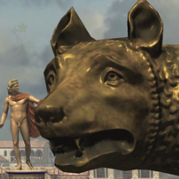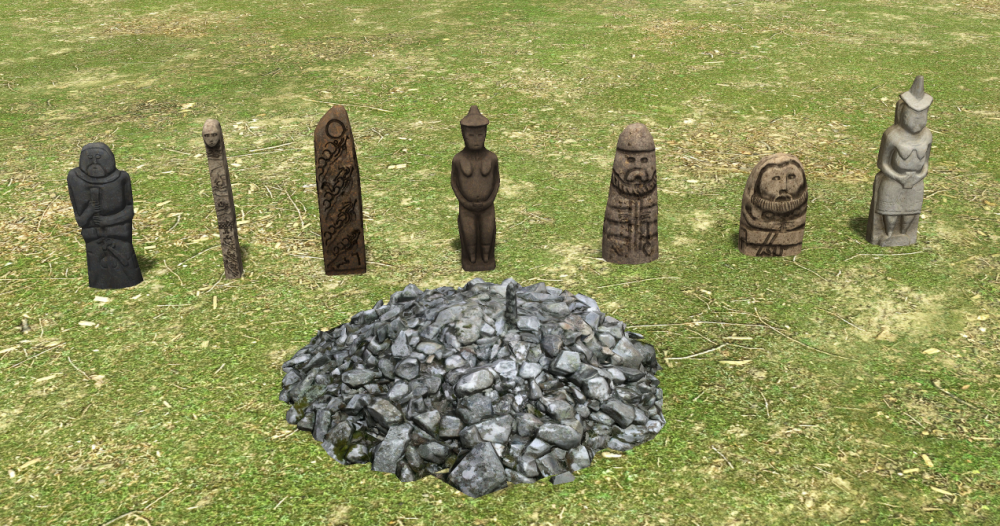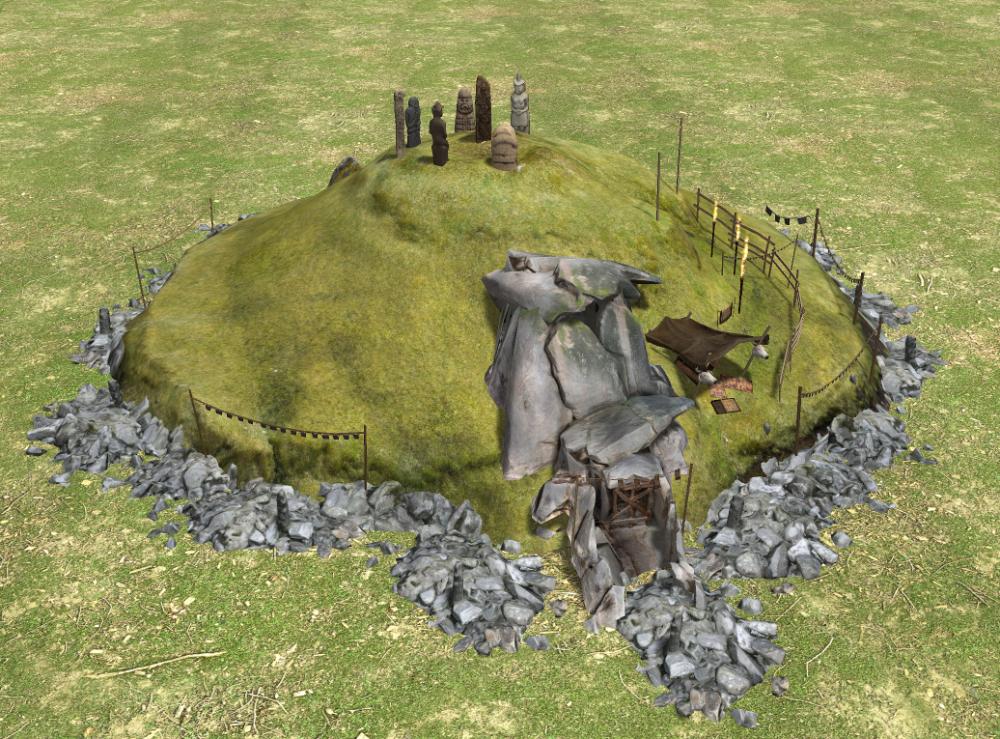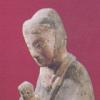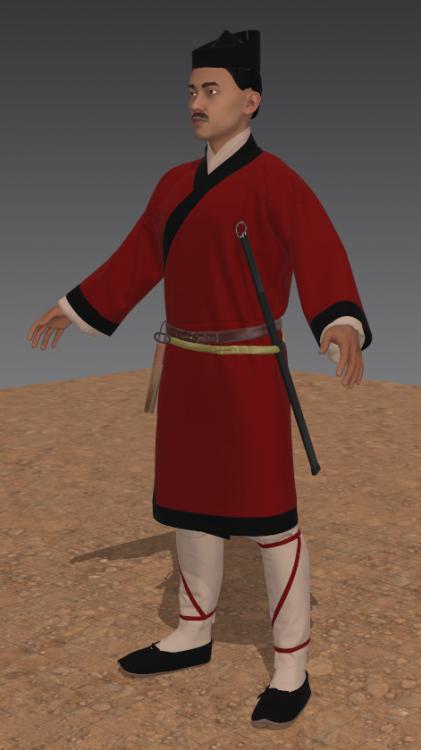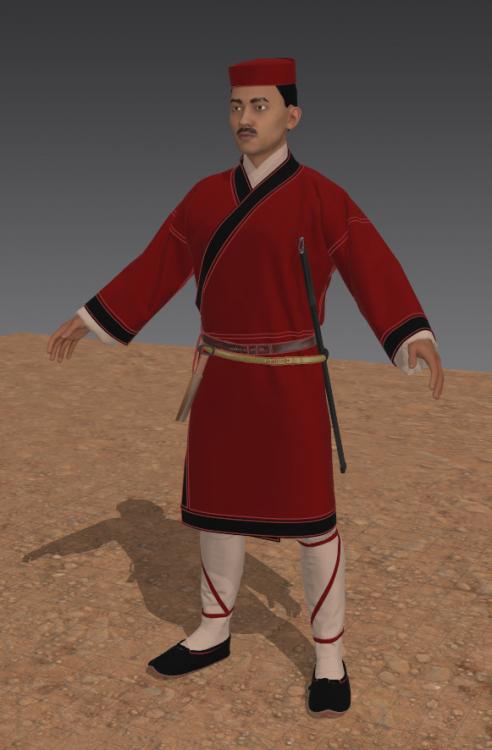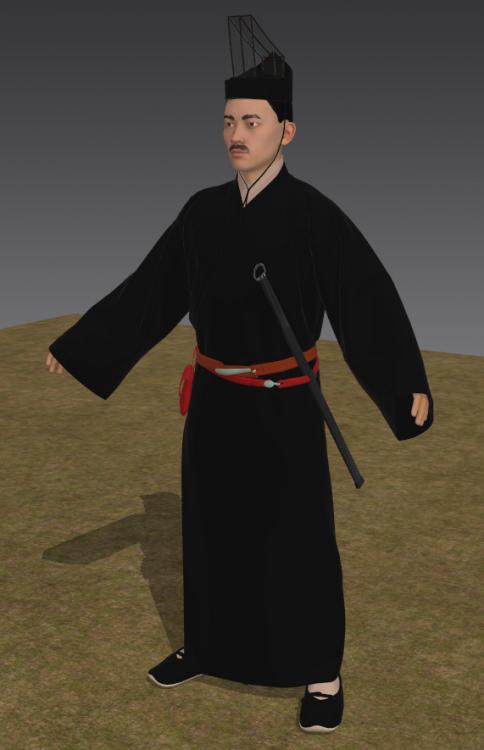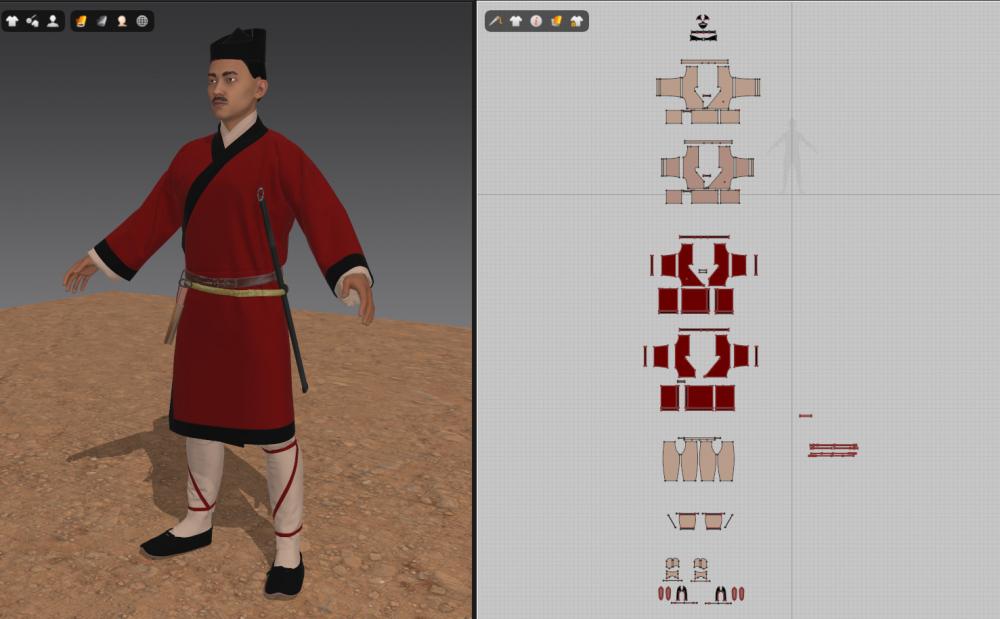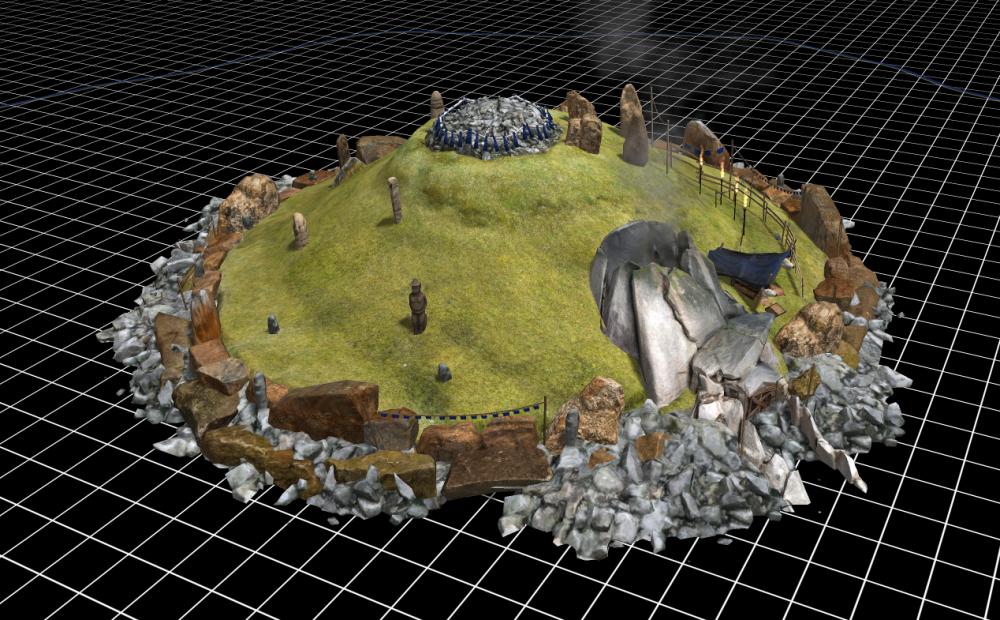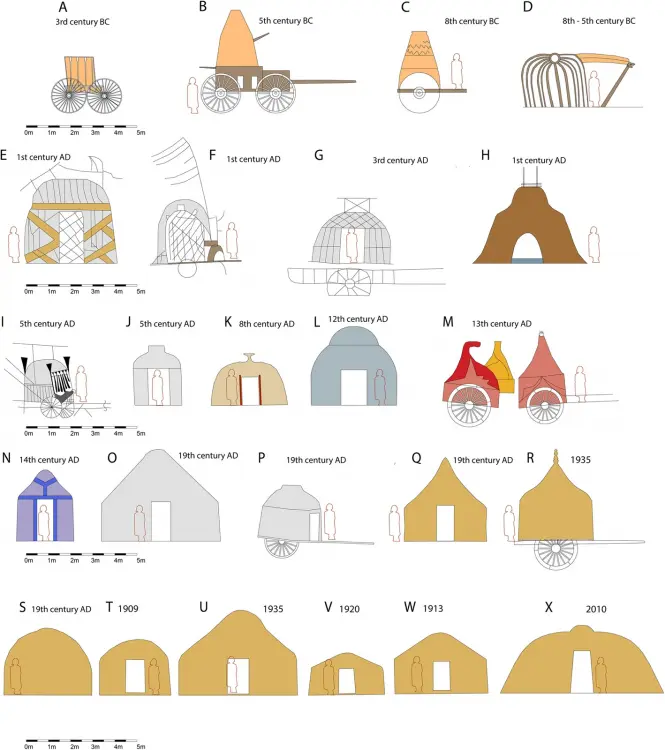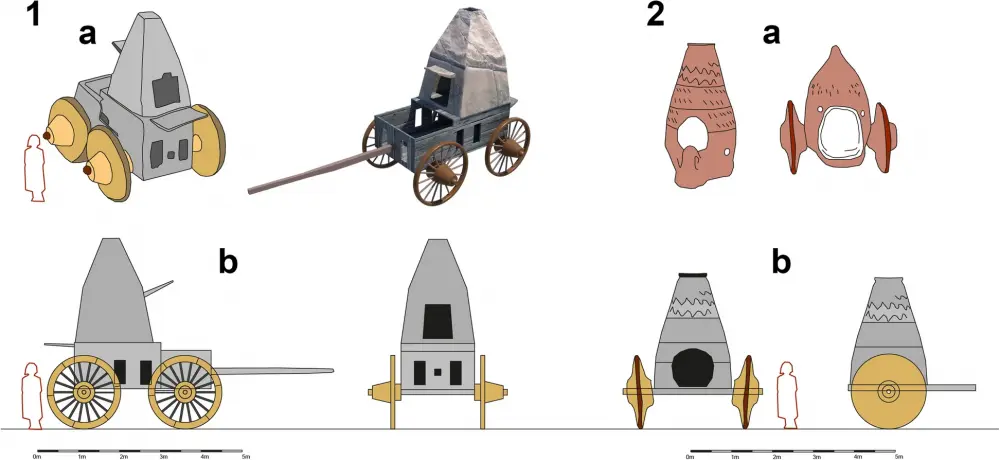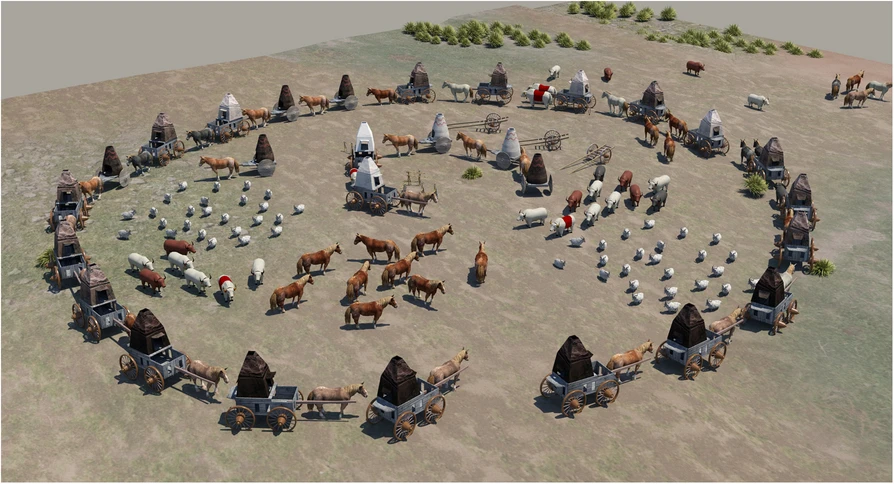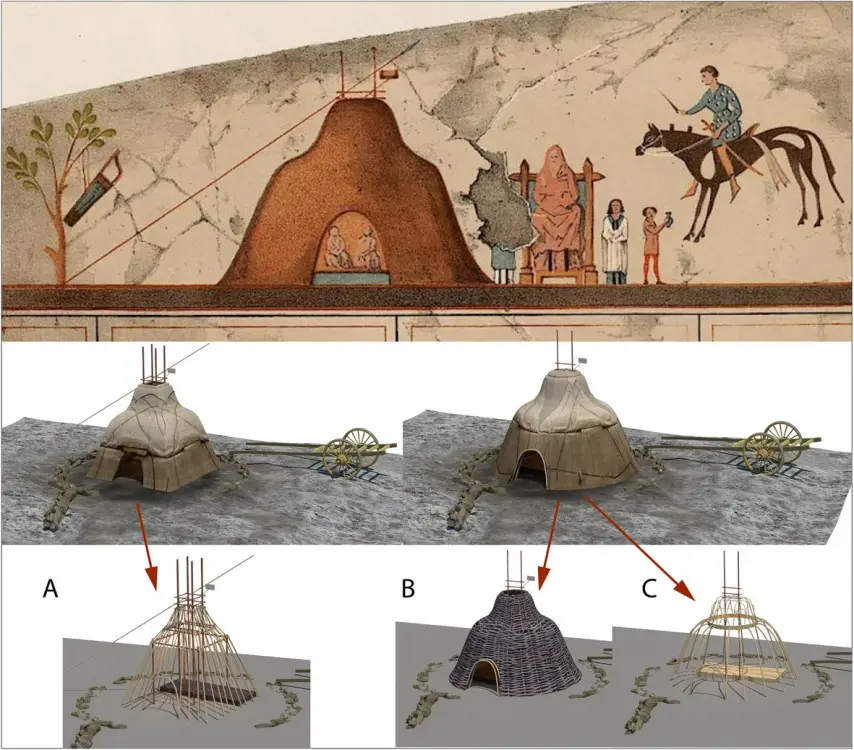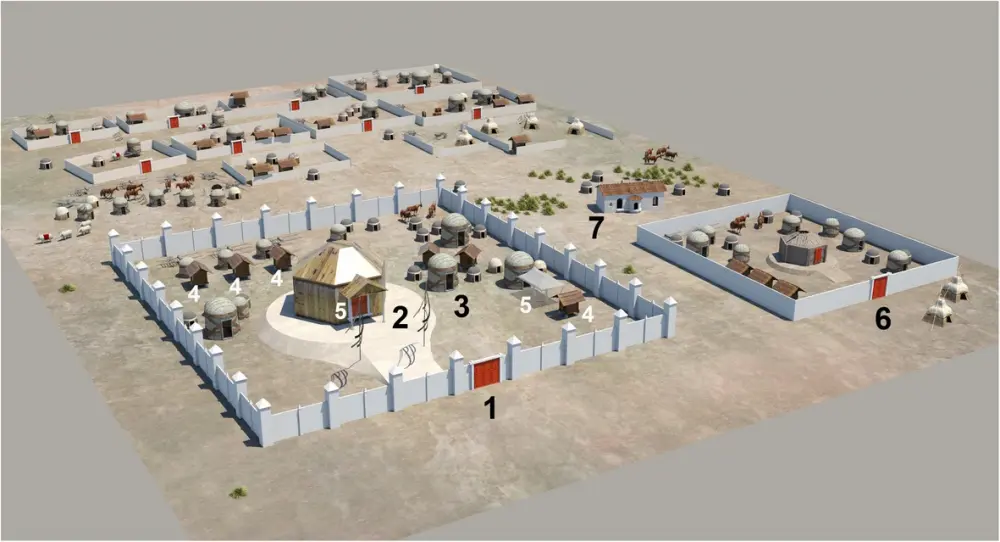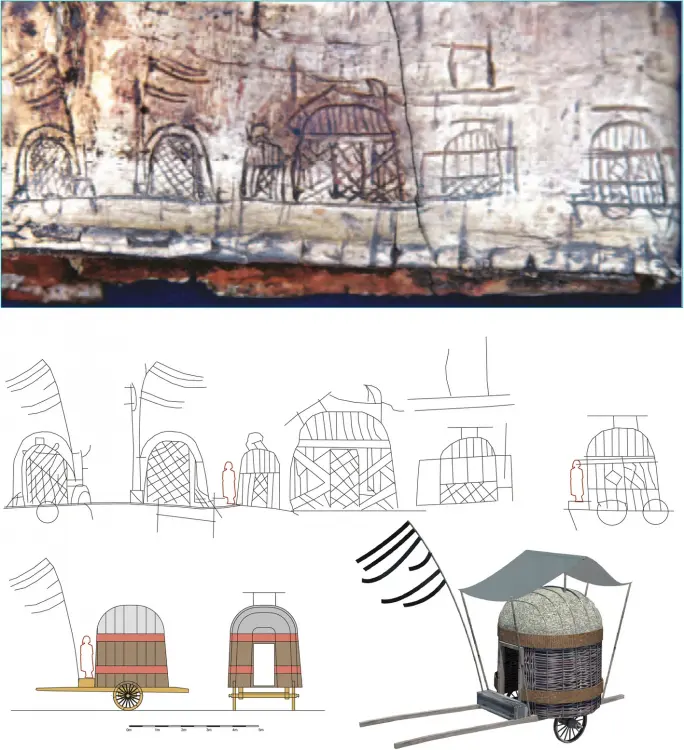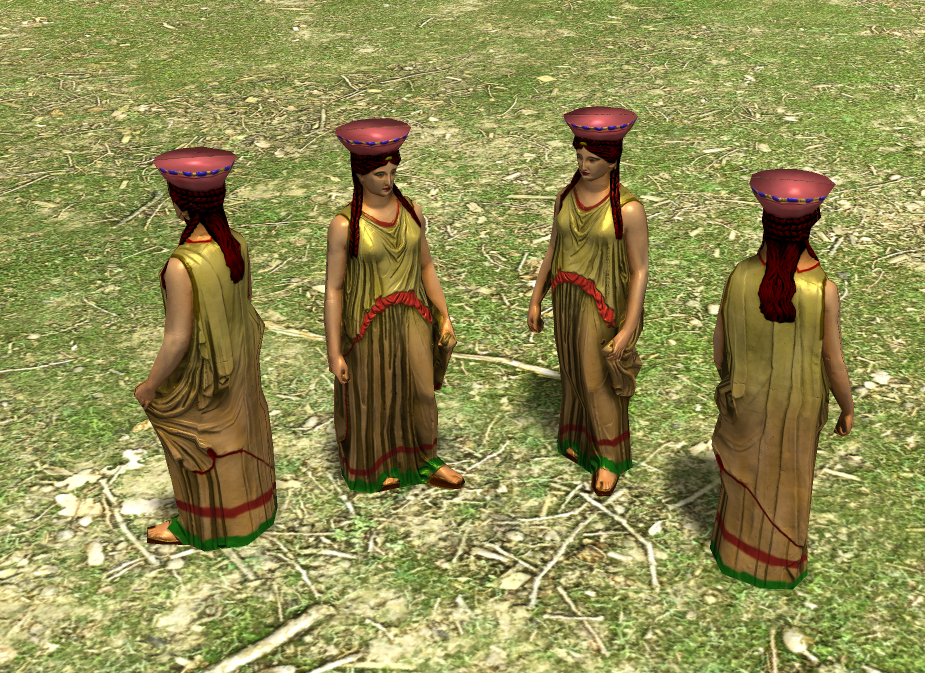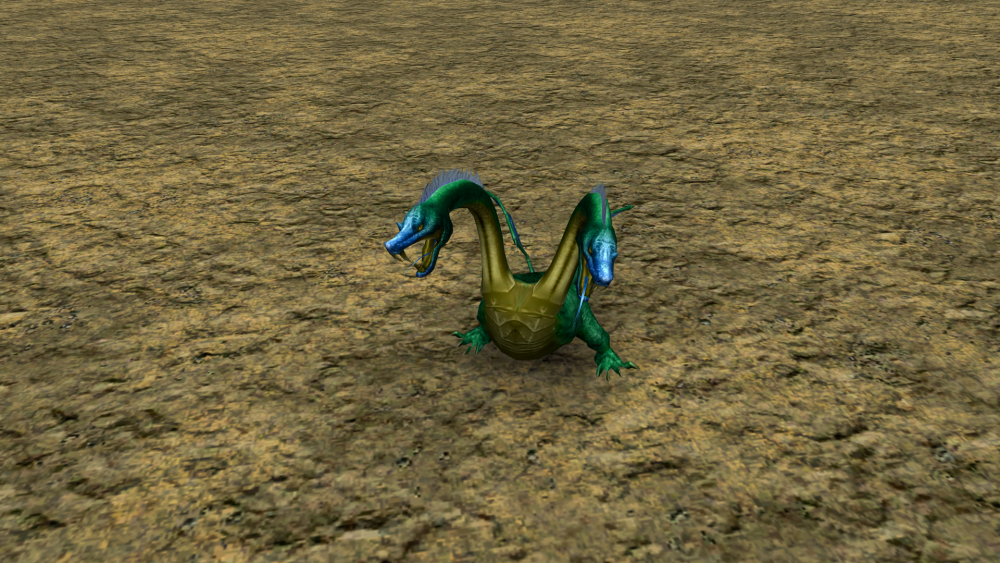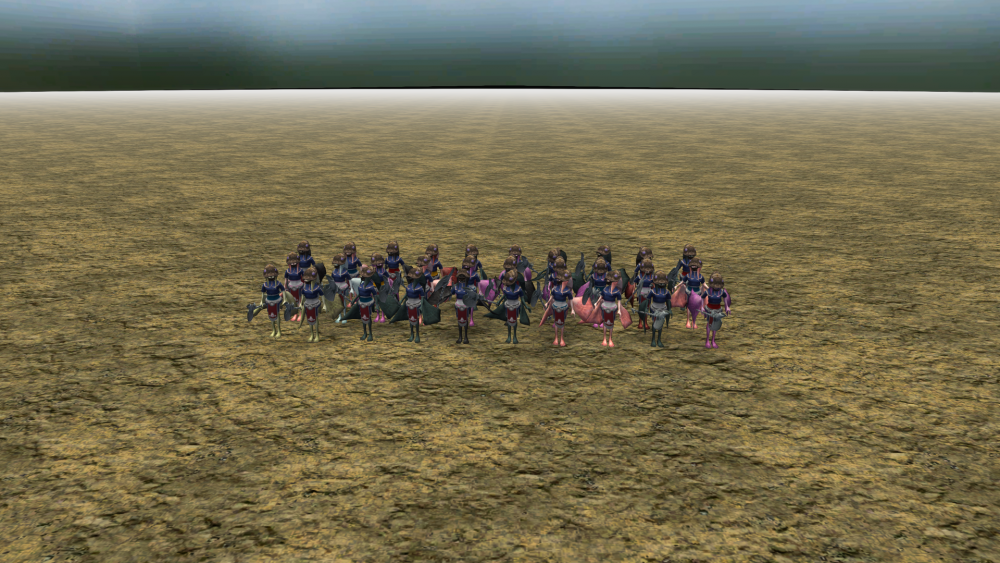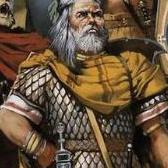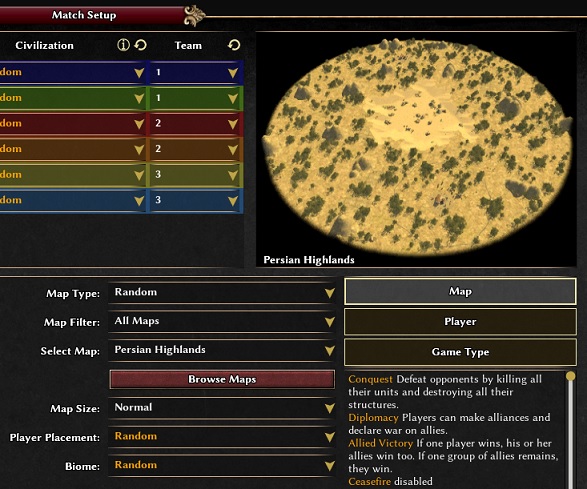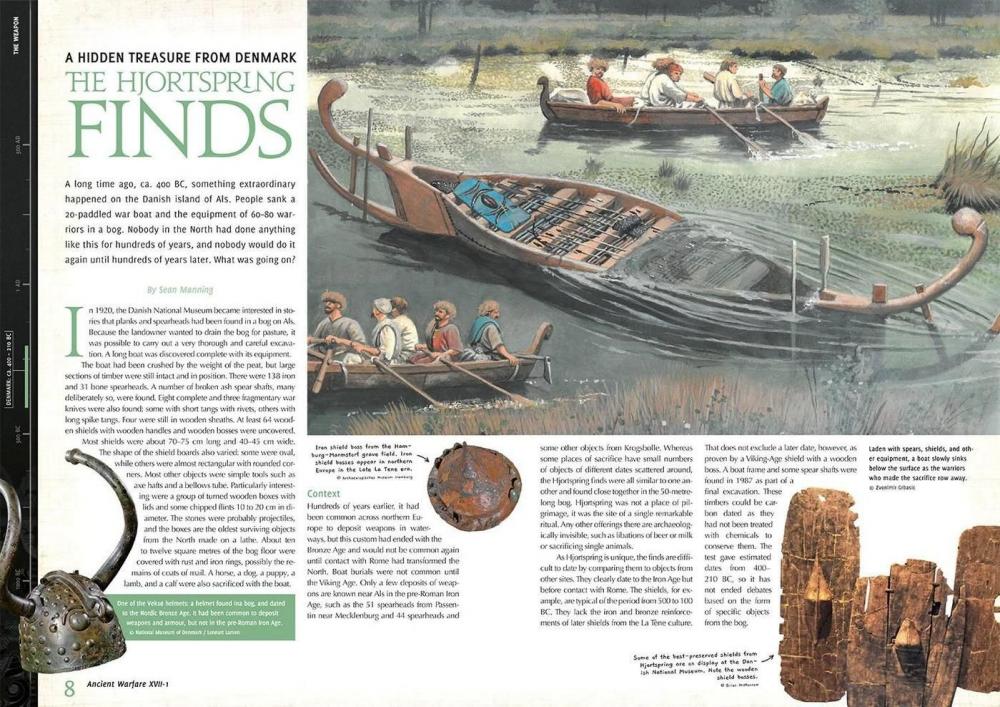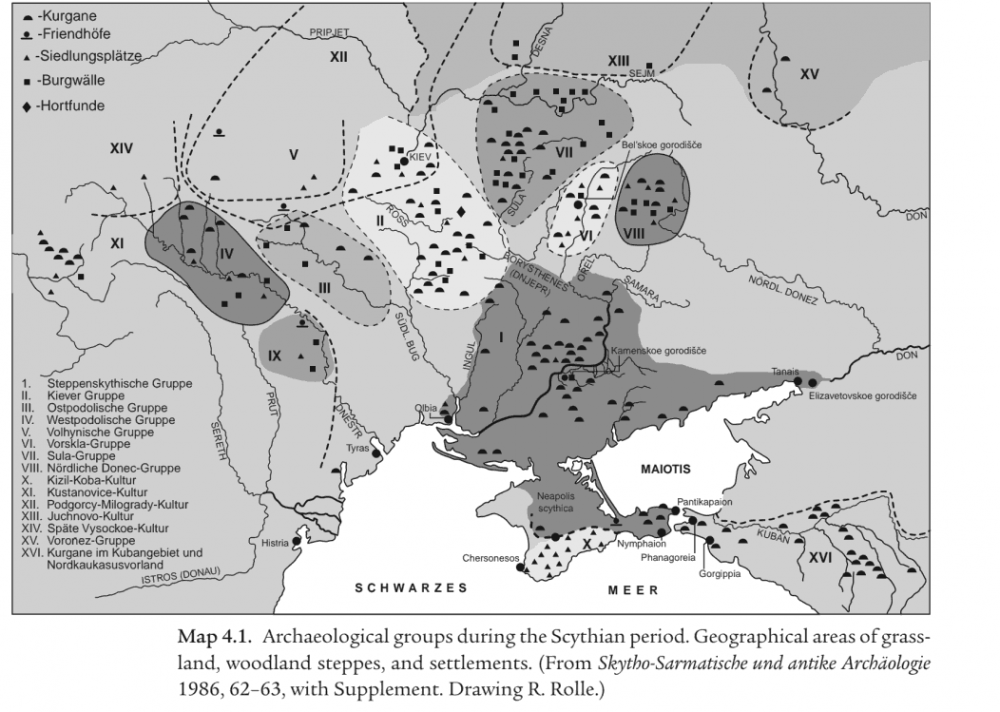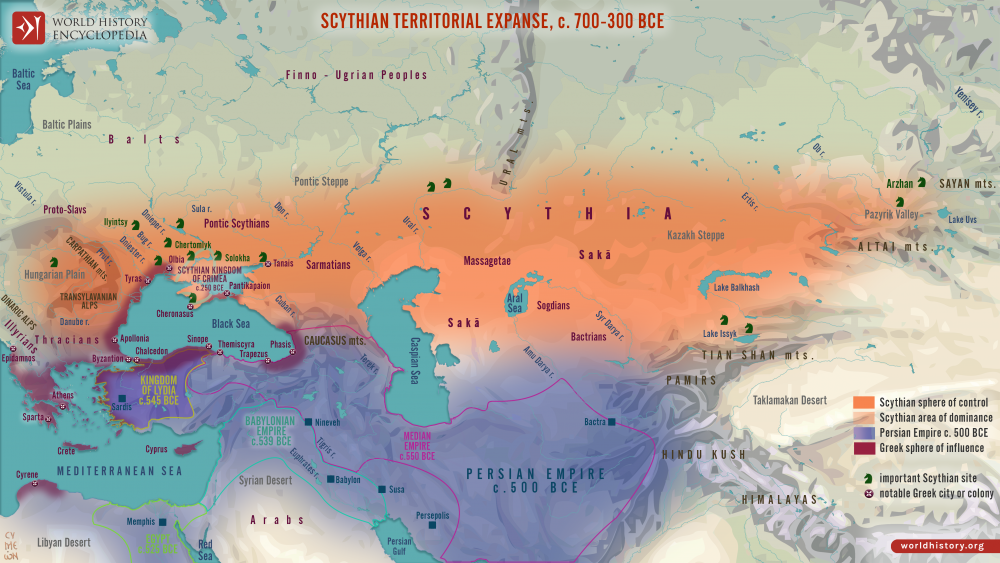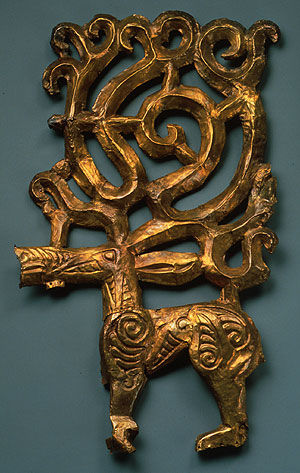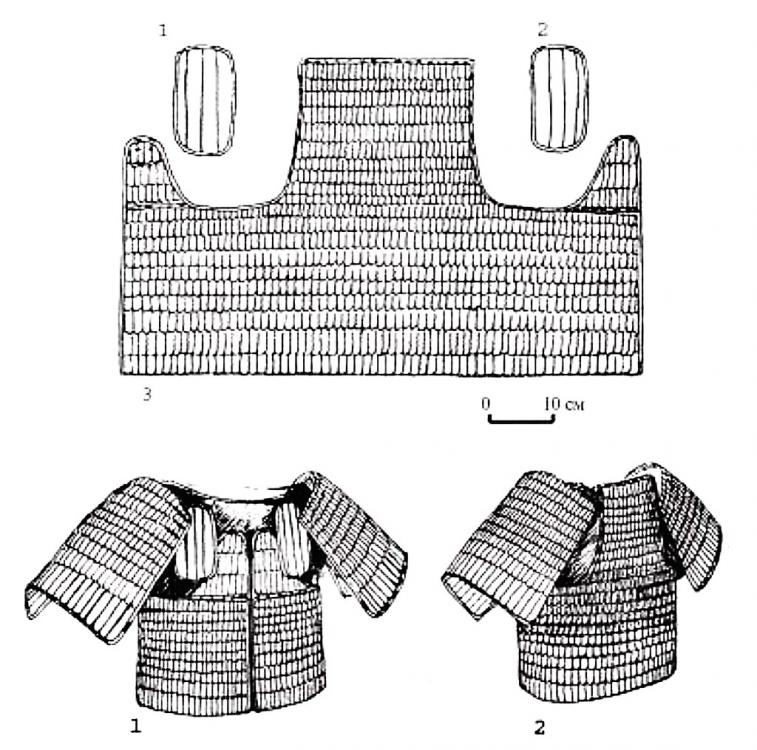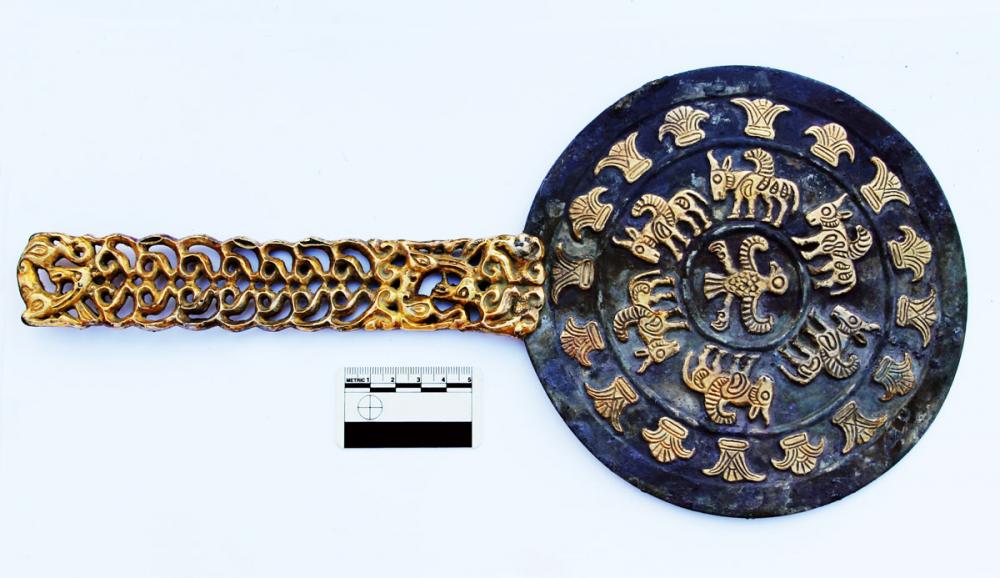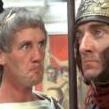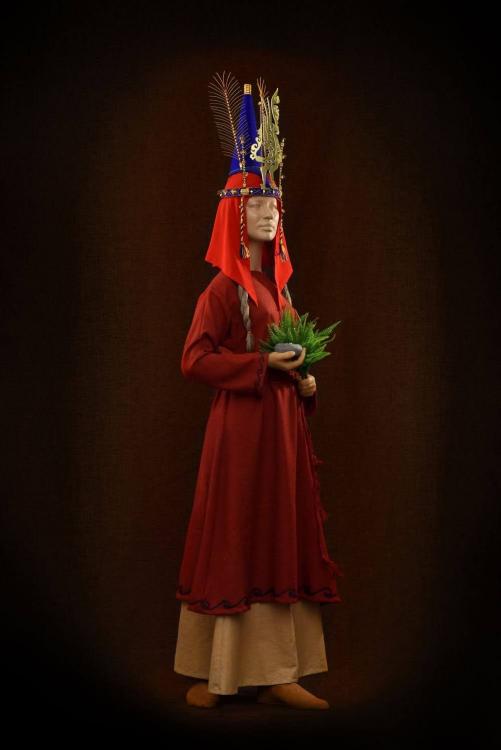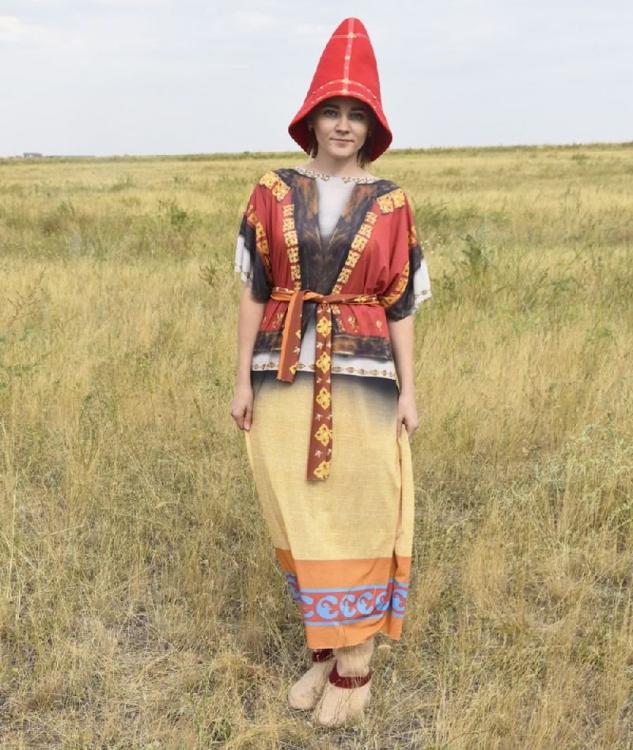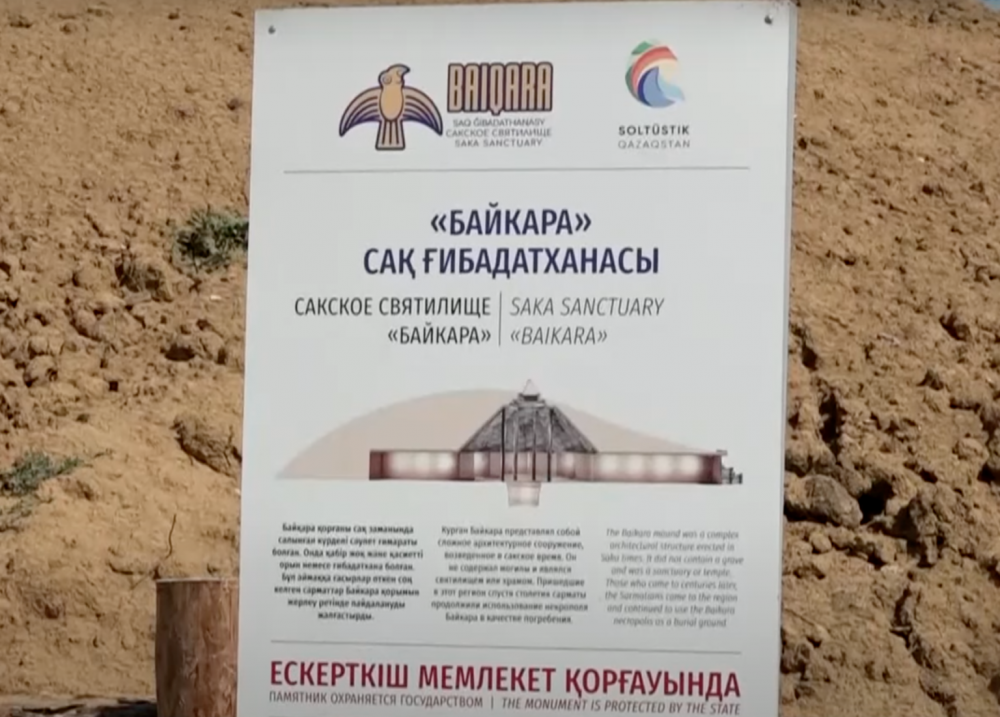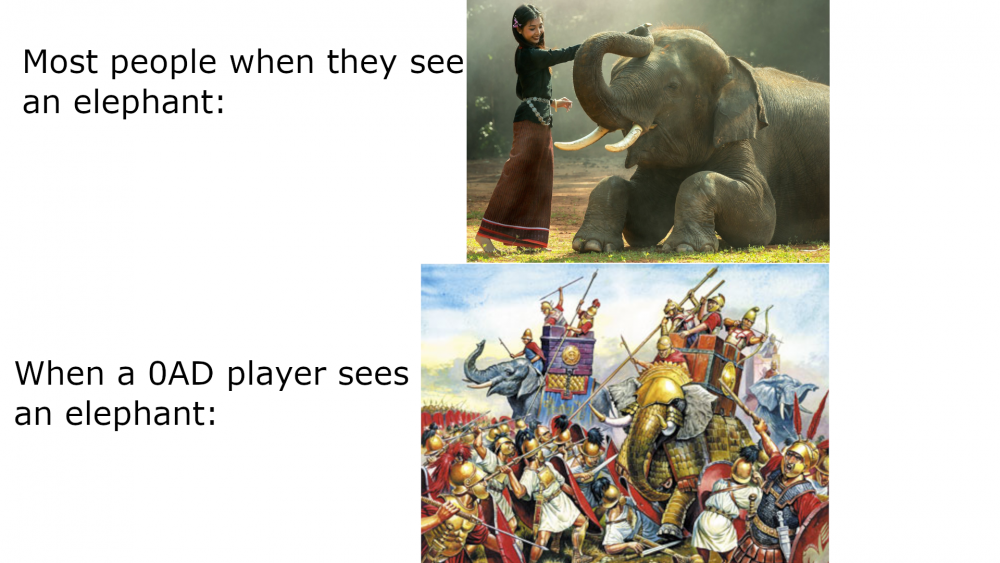Leaderboard
Popular Content
Showing content with the highest reputation since 2025-11-03 in Posts
-
I've been working on the Scythians a lot lately for DE (and eventual inclusion on EA. R29?). Ported over a few assets from Endovelico. Made some actor and mesh improvements, rethought a few things, etc. An updated direction for the Market. This is just a mockup, but easily accomplished: Their "Academy" (Imperial Academy/Syssiton/Gymnaseion) structure, the Royal Yurt. Trains champions and heroes: Stable, by @Duileoga: Corral: Ovoo: Thoughts: Google Translate now has the Ossetian language, which is the closest living language to Ancient Scythian. Let's leverage Ossetian for SpecificNaming. Nomadism Buildings auto-build, but have -50% health and capture points. While they are easier to destroy or capture, they also don't capture decay in neutral territory (they don't require territory roots). Receive special Ox Carts which are mobile resource dropsites (like the German ones) but can also transform into Houses and Storehouses at-will (and back) in own/allied/neutral territory. The Civic Center +25% territory influence radius (a great bonus), but its weight is -50% less than normal (their borders push much less against enemy borders than other civs do). Scythian Commoners (their Citizen-Civilians) have a range attack (use bows instead of knives) and an attack bonus vs. fauna. These traits can go to any nomadic civilization we may include, such as Xiongnu or Huns. Pastoralism Corral technologies research instantly. Receive a special Corral technology: Extensive Husbandry (boosts ranching) Receive a special Corral technology: Falconry (boosts Cavalry vision range and hunting) Raiders and Plunderers Scythian Maiden Huntresses +500% (TBD) loot while killing enemy units or destroying enemy buildings. These units are glass cannons, but if used right can more than pay for themselves in loot gained before they are killed. Scythian Buildings and Units only give half-loot when killed. Winds of the Steppe A team bonus for Cavalry or Stables or both. The cult of Scythian Ares The Scythian Ovoos are their primary territory pushers. No other structures besides Civic Centers and the Fortress (see below) have territory radius effects. The Ovoo also has an aura that boosts soldier attacks ("Sword of Ares") and Priestess stats ("Cult of Ares"). Scythian Priestesses can also pray here to get resources (TBD). Ovoos cost stone and metal and are very very tough and uncapturable (must be destroyed). Eventually we can create a new model which is the wooden platform with the sword at the top as described in the Histories. Maybe we can change the cost to Wood and Metal then, or give the Scythians the option to build either the stone ovoo or the wooden platform. Fortress The Scythians do receive a stone Fortress structure, but it's treated like a special building in that only 1 may be built. It becomes available in Town Phase. It has a territory radius, but functions more like a hard point for defense or offensive push, more typical of a redoubt. Fortress units (Champions and Heroes) are moved to the Royal Yurt (see image above, information below) as well as standard Fortress techs. The Fortress does get to train the Scythian Battering Ram in Town Phase and research the ram's relevant siege technologies. Royal Yurt Their "Academy" type structure, similar to the Spartan Syssition, the Han Imperial Academy, and or the Athenian Gymnasium in that it trains Champions and Heroes and researches relevant techs. It's also given the standard Fortress techs, such as Espionage and Will to Fight. Can invent a Special Tech for here. Maybe "Cavalry Tradition" or a special rank promotion tech applicable only to Cavalry. Technologies A special Forge technology: Goldsmithing (a boost to Market/Trading). The only Forge tech in the game with a specific economic effect. A special Forge technology: Composite Bows (boosts infantry and cavalry archers specifically). Replaces the final melee attack tech. They receive Archery Tradition like the Persians. Most technologies, except those in the Civic Center, take 25% longer to research or cost 20% more (TBD). I think something like I outlined (the exact values of things open for balance and design) keeps the core territory gameplay of 0 A.D., but adds enough distinctive features to make them feel a lot different than the other more "sedentary" civilizations. For DE specifically, I'll differentiate them even more with Cult Statues, Scouts, Cavalry are builders etc. But for EA I think what I've outlined is more than enough. What think?7 points
-
Hi all, I finally want to share the results of a project I've been working on for some time and abandoned several times in between. So here it is, the royal kurgan, a burial mound for a wonder for the scythians. Two main difficulties: (1) somehow make look interesting, what in references is just a bare hill and make it look built by humans (2) let an organic building blend in with the surrounding topography. Concerning (1): It might look too busy, there might be better options for prop placement, player color is difficult to add, maybe too many different/ not fitting stone colours, maybe add flora? Concerning (2): The underground part consumes a lot of tris, but the gravel stones blend in nicely with the ground also on uneven terrain. I don't know if it goes deep enough though. Further references: Some CC0 models I used: Feel free to test from the zip I added and let me know. I also added 7 different steles and two stone heaps of different sizes: This is how it would look without the reddish stones: What is left to do: Choosing the final layout; maybe some colour adjustments; deleting all those hidden faces from the stones on the inside, tthen bake ao; checking on naming conventions, actor files and materials. Also the foundation is just prototype. Edit: I played around with the colours a little bit, turns out that adding some warmth to the gravel base helps a lot, so the contrast between the grey and the reddish stones isn't that harsh. @wowgetoffyourcellphone do you think you could work from here? My skills with colours and picture editing are very limited. 862891456_kurgan0_28.1.zip5 points
-
Currently some characters of the Han civilization in 0AD do not exactly show the style of the Han Dynasty. I have made several models based on the pottery figurines and stone reliefs of the Eastern Han Dyansty (25 AD - 220 AD), as I wish to bring the clothing of the Han Dynasty to 3D based on archaeological documents. I use Marvelous Designer for designing clothing and use Blender for designing the rest. I may offer clothing models. I cannot offer human models and materials as they are restricted by licenses. For human models, perhaps you may offer base human models, so I can adapt clothing to them. I am not able to make animation or skeletons. So if you need a character to perform a specific action, I am not able to do that. Some pictures of the models I made are attached.5 points
-
4 points
-
https://built-heritage.springeropen.com/articles/10.1186/s43238-025-00191-2 Inner Asian and Eurasian nomadic camps comprise different types of guyed tents, mobile wood-framed dwellings and carts of various forms. One of the first available depictions originated from the Arjan Bowl, which was found in an Elamite grave in Iran and was dated 800–500 BCE (Majidzadeh 1992). It shows a rib tent (which would be dismantled for transport) with struts and a roof hoop (Fig. 3-D). Greek sources mention Scythian nomads residing in carts, e.g., Hesiod (eighth century BCE), in which Phineus is carried by the Harpies ‘to the land of the men who live on milk and who have their home in wagons’ (Hesiod, The Poems and Fragments (1908, 89, frag. 54). Aeschylus (525–456 BCE) mentioned ‘wattled dwellings, poised high on true wheeled carts’ (Aeschylus 1922, i, 278–279; Andrews (1999, 14) interpreted this passage as indicating that the dwellings were made of a frame woven from twigs or sticks (probably from willow), which was then fixed to the cart and covered by felt. The latter fact was noted by Hippocrates (ca. 460 to ca 377 BCE): Comparison of the shapes and sizes of tents and tent carts from historical finds, depictions or photographs. All tents are scaled to the same size (as far as it was possible to determine the exact size). A Pazyrik cart, real find; (B-C) after clay models; (D) rib tent from the Arjan Bowl; (E-F) Xiongnu carts, birch-bark container in Tsaram; (G) Xiongnu carts, Shancheng coffin painting; (H) Sarmatian tent, tomb of Anthesterius, Crimea; (I) cart from a Tuoba coffin in Datong; (J) Tuoba tent from a grave in Datong; (K) Tibetan tent from a coffin painting in Delingha, Qinghai; (L) Khitan tent from the Wen-Chi scrolls; (M) Cuman carts, Radziwill chronicle; (N) Genghis Khan´s tent, Persian miniature; (O) Kalmyk, 1806 Bertuch Bilderbuch für Kinder; (P) Nogay cart, engraving; (Q) Turkoman tent in Afghanistan, drawing by William Simpson; (R) Chomchugh, refer to the text and Andrews (1999); (S) Kyrgyz kibitka (yurt) drawn by painter Vasily Vereschagin; (T) Avsar tent in Kayseri, photo by Gertrude Bell; (U) Kazakh tent, photo by Owen Lattimore; (V) Mongol yurt/tent, photo from the 1920s; (W) Mongol yurt/tent near Kalgan, photo by Stéphane Passet (1913); (X) Shasavan rib tent, Mount Sabalan, photo obtained in 2010 ‘There too live Scythians who are called nomads because they have no houses but live in wagons. The smallest wagons have four wheels, others six wheels. They are covered with felt and are constructed like houses, sometimes in two compartments and sometimes in three, which are proof against rain, snow, and wind’ [refer to Hippocrates Vol I, De Aere xviii, translated by Jones (1923, 119)]. Models of four-wheeled wagons with tent-like superstructures dated to 600 BCE were found in Kerch in East Crimea. These were made of clay with small windows in their lower structure. The author´s reconstruction is based on such a clay wagon mock-up (Figs. 4, 5). Hippocrates also stated that women and children lived in carts, whereas men spent most of their time on horseback and tended to flock. No depictions of Scythian dwellings (apart from clay models) have been discovered, although in the Pazyrik Kurgan (third century BCE), a complete wooden ceremonial wagon was found. The wagon was preserved exceptionally well and is now on display in the Ermitage in Moscow. Reconstructions (1-2 b) of a Scythian wagon (1) and Mingachevir cart (2) drawn by the author after clay models (1-2 a) Reconstruction of a Scythian wagon camp The first suggestion of tents that represent separate entities and are not part of carts is given with respect to Sarmatians. Strabo (53 BCE to ca. 21 CE) reported, ‘As for the nomads, their tents, made of felt, are fastened on the wagons in which they spend their lives, and round about the tents are the herds which afford the milk, cheese and meat on which they live, and they follow the grazing herd, from time to time moving to other places that have grass…’ (Strabo 1960), vii, 3, 17). Whether these tents fastened to carts were frequently removed and placed on the ground, as the tent components of tent carts in later times would have been, is unclear. There is only one known depiction of a Sarmatian tent, which is set on the ground. It was depicted in a wall painting in a grave chamber in Kerch on the Crimea Peninsula. Unfortunately, it does not exist anymore. Relevant documentation can be found in Minns; Wajnstein (1996) attempted a rectangular reconstruction of the tent. In this work, the author aimed to reconstruct rectangular and round variants, as no definitive hint regarding the ground plan is given in the depiction (Fig. 6). A structural system was also reconstructed, with the following options: A: rectangular variant, 4-post inner structure; B: round variant, woven/wattled structure; C: round variant, rib-tent structure. Depictions of a Sarmatian tent on a wall painting in Crimea (Source: Minns 1913). Shown below are reconstruction possibilities (Source: the author). It is possible to reconstruct the shape as a rectangular (A) or a round tent. For the round variant, a woven/wattled structure (B) or a rib-tent structure with a roof hoop (C) is possible According to Priscus of Panium, who was a diplomatic envoy and therefore eye-witness of the camp of Attila the Hun, Attila’s wife Hereka lived in a circular building with a wooden frame covered in skins or leather. This passage is the only reference in which Hunnic dwellings are described as circular and possessing a wooden frame. However, this passage has been debated as the text is not clear, but recent work (Carolla 2019) supports both the circular shape and skin/leather covering. Elsewhere in the text, Hunnic buildings are described as huts (Greek: kalube), which indicates that they are semipermanent buildings. Alternatively, although they comprise a wooden frame, they could be covered with reeds (mats) or similar material (but not felt or skins). However, no indication of their shape is given. Later, sixth-century Greek emissaries to the Western Turk ruler also described framed tents as huts (kalube) (Andrews 1999). Thus, it is not completely clear what type of building or tent (?) Priscus had observed. The building of Attila was described as being made of wood, but again, no definite indication of the ground plan form was given, only of its material (‘it had been fitted together with highly polished timbers and boards’ (Priscus of Panium in Gordon 1960, 84). The dwelling of Hereka is described as follows: ‘Inside the wall [of the compound of Attila], there was a big cluster of buildings, some made of planks carved and fitted together for ornamental effect, … the other [houses were made] of leather polished and cut straight/upright, put into some wooden circular basis. I gained entrance through the barbarians at the door and came upon her lying on a soft spread. The floor was covered with mats of felted wool’ (Priscus of Panium trans. Carolla 2019). Please also refer to Fig. 7. The extensive use of felt inside Hereka’s dwelling indicates a nomadic building context in any case. The custom to cover trellis tents in skins or furs and not felt exists ina nomadic historical context, e.g., there is a trellis tent of the Mongolian Bogd Khan from the 19th century covered in snow leopard skins (furs) on display in the Winter Palace of the Bogd Khan in Ulaan Bataar. Highly hypothetical drawing containing all the elements mentioned by Priscus of Panium, as observed by him in Attila’s capital during the fiveth century. 1, Attila’s compound with gate doors and wooden palisade with towers; 2, Attila’s dining hall/house at an elevated location; 3, Hereka’s tent; 4, buildings made of carved wood; 5, porticoes; 6, Onegesius' compound with a wooden enclosure without towers; 7, Roman bath built of stone by a captive architect from Syrmium In East Asia, there are several depictions of Xiongnu dwellings from the first century. To date, three scratched drawings/decorations of birch-bark containers show Xiongnu dwellings. These depictions all show the same dwelling type (Fig. 8): a round, domed hut with walls made of diagonally crossing lines (probably twigs or sticks). In some cases, this diagonally crossing structure extends to form the dome of the building. The dwelling comprises vertical walls, which, in every case, terminate in a horizontal band spanning the whole dwelling (a textile band holding the hut together, as in the case of modern trellis tents?). If there is a drawn door, it also reaches this horizontal band. The dome is often covered with what seem to be vertical stripes of different materials. At times, the walls are additionally wrapped with crosswise textile bands, and the walls can contain windows. An opening at the apex of the dome-like roof is not shown in any depiction (But its presence cannot be ruled out either). There are always two vertical sticks connected by a horizontal stick above the roof. The function of this construction is described later and is very similar to that in Tuoba Xianbei depictions (Fig. 9): very likely, an awning spanned above the dwelling to shade it (However, there is no Xiognu depiction were we actually can see such an awning in the drawing itself). The dwellings are often shown placed on carts. Moreover, the cart wheels encompass spokes, and the cart type is a two-wheeled cart. Written sources support the conclusions drawn from the images: The Xiongnu also employed ‘domed huts for homes’ (Huan 1994, 38) and ‘woven branches to make houses’ (Huan 1994, 52; Miller 2012). Depictions of Xiongnu carts found on a birch-bark container in Tsaram (after Minyaev (2009). Shown below is a line drawing of the scratchings and a reconstruction by the author. The awning above the cart was added as an analogy from fifth-century Tuoba Xianbei cart depictions Tuoba Xianbei cart depictions from coffin planks from Zhijiapu (Source: Liu and Gao 2005) @wowgetoffyourcellphone@Lopess I highly recommend to read the entire article.4 points
-
3 points
-
Hey everyone! I’ve been asked to bring some great news — a new 0 A.D. tournament is coming this December, organized by SaidRdz! He even made a flyer himself… let’s just say it comes with his signature dark humor (as u can see he is master in paint ) If you want to join the fun or need more info, hop into the Discord channel — everyone’s welcome, whether you’re here to win battles or just laugh at the chaos! https://discord.gg/wd266ueY3 points
-
Alright everybody! The new version is ready! Version 0.5.0! This release adds the Lanayru Province, one of the three Zora civs that will be in the mod. Here are some pics You can download it here: https://www.moddb.com/mods/hyrule-conquest-revival/downloads/hyrule-conquest-revival-0-5-0 and here: https://github.com/Perzival123/Hyrule-Conquest-Revival/releases/tag/new. I hope you all enjoy it!3 points
-
3 points
-
2 points
-
I got tired of making a new thread for every new question and error, so I thought that I would make a thread for all questions and answers (along with guides) to post on. If you need help doing something for your mod, want help with errors you generated, or want to post some guide or tutorial on how to do something related to modding, and don't think it deserves/needs it's own thread, post it here.2 points
-
I'd say keep the entrance part, but remove the volcano. We've seen several artistic images of Kurgans, at least temporarily, having an entrance. For the stele, I think they should have a more regular pattern to their layout. For the rocks along the base, I think they look too chaotic right now. I agree there needs to be something to help the hill of the kurgan to blend with the existing terrain mesh and rocks are a good way to do it, it's just too chaotic looking right now. You are on the right track. I appreciate the attempt at some detail at the top, but in no reference or even artistic interpretation have I seen a pile of rocks at the top, though I am open to being wrong. You did a really good job UV mapping the grass on the hillside. Most of the other attempts from other artists have kinda failed at this detail. I appreciate the effort and would really like to see you keep iterating on this and making something nice. I'd also like it if you made a 2nd custom mesh for its foundation actor too, because as you've noted, it's quite a different construction from other buildings in the game.2 points
-
Here's a new RTS for Linux that I just found, Warzone 2100. It has some really cool features, like the ability to make brand new units by researching different techs in the tech tree to create a unique experience every time. Here is the site, and a video about it: .2 points
-
The video was nice to watch. But this one is less nice to watch: With this one can capture way faster buildings because the units don't need to surround the building but can just capture in a cluster. Normal behavior without formation: cap_no_formation.mp4 With no override setting + formation capture: cap_no_override.mp4 This is especially annoying if you carefully block the building and only have a small part of it exposed. Or 2 players are in one base and can capture within some seconds a cc.2 points
-
@AlexHerbert those are the cav you get after Marian reform (Roman upgrade in fort). Once researched, this tech change almost all units of the Romans; It's mostly a tech to make infantry stronger, for cav, stats aren't affected but icon still are. It's new from a27.2 points
-
If we want to work on that, on "fire decision" mecanism could be based on the density of friendly troop in a zone. Archer/slinger would only fire at enemies if the density of friendly troop in a "kill zone" of the weapon if below a given threshold. One could imagine 3 different leves of threshold for that that could be controlled by the player ("safe", "moderate", agressive") the same way that the "attack stance" is controled. SO in term of computing, you don't make a computation per range unit, but per zone more or less. Technical development could allow for improving accuracy (that's already implemented) and other parameters with this new mechanism in mind2 points
-
The five main ways to detect a bot: #1: They highlight proper nouns to seemingly make their point. #2: They post something barely, if not completely unrelated to the topic. How do you make coffee? With MagiCoff! #3: They have names like real people, like this, JasonHawken28. No one else has a name that makes sense without explanation. #4: They always have a link to their website, for proper advertising. #5: They post once, then disappear forever, never to be seen again…2 points
-
I heard upper case [C] captures faster. And don't forget to say: Wololo!2 points
-
This did not happen much with armies moving in formation like the phalanx, but in the game it does happen . Completely agree. I think this should be the goal2 points
-
From what Brett Devereaux writes, this doesn't happen historically (except in very rare occasions); that's a modern misconception. Anyway archers should in some situations be able to shoot over their melee comrades, probably not (or with the risk of friendly fire) on the first rank of enemy soldiers engaged in melee, but on the rear ranks. And of course also on the first rank while they charge and are not already engaged in melee. Also if we want to have ancient battles and not napoleonian ones with swords and arrows, we probably should take kiting into account : yes, missiles can shoot quite far, but without any discernible impact on armored troops. Only at close range (where an enemy charge can wreak havoc to them too) can they be actually effective. The more armored the enemy is, the closest the range of effectiveness. That would make for very interesting tactical decisions, and make melee troops the kings of battles, as it was historically (while still allowing missile-heavy tactics like the Persians used, but only if done well, and prone to awful failures if done badly, as the Persians learned at Marathon and Plateia, or against the 10 000).2 points
-
Palisades should be upgradeable to stone walls, for slightly less cost and time than building them. Then, palisades stop being useless late game, since you can turn them into much stronger walls.2 points
-
The best solution, in my opinion, is to enable friendly fire for ALL missiles, just like real life. Then, if you want to have a squad of archers, you actually have to think: Is it worth the risk of my soldiers getting hit by arrows? Is it better to put my archers to the side, and have them shoot at reinforcements? Or should I train a whole bunch of guys that are resistant to pierce, and have my archers fire into the melee? These would make the game much more exciting, and also more realistic.2 points
-
UPDATE: Version 0.7.6 Fixed a bug when recruiting units on the very easy difficulty setting.2 points
-
Right. Standard construction still requires own territory, but the buildings don't decay if cutoff from a root. The only thing that bypasses this is when you convert an Ox Cart to a house or storehouse in neutral territory. It's a nod to nomadism that doesn't completely remove the territory dynamic.2 points
-
The only illustrative reference is from Ancient Warfare magazine but it is a sketchy simplification : The boat was submerged with blacksmith tools, with wooden vessels and recipients, animals were sacrificed, notably a horse and two dogs. Spears and oars were thrust into the silty bottom to anchor it. There were dozen of spears and shields submerged with the boat.1 point
-
1 point
-
Hey @nifa This looks pretty nice. Great work. Maybe we could somehow reduce the polycount by baking some of the stones into a decal with a normal map?(looks like it's already a texture but I can't check right now) Could save some tris by making the decorations transparent texture instead of little squares. Might be nice to find a way to have a hint of player color as well.1 point
-
Honestly, something simpler looks great as well. Without all of the props on the hill. The base surrounded by stelae.1 point
-
https://code.wildfiregames.com/P232 And https://gitea.wildfiregames.com/Stan/pyrogenesis-migration-scripts1 point
-
1 point
-
spawning this would make a nice easter egg at the end of a game with the condition to capture all 7 relics.1 point
-
We could trick it like Lordgood did. Basically inside the model you'd hide the fire. And using two bones to stretch it you could do something yeah. For now though, it does nothing. I think it was heavy sarcasm.1 point
-
The Sarmatians are very closely related to the Scythians. They share a similar language that belongs to the Iranian language family. The real differences between the Sarmatians and the Scythians stem from the fact that the Scythians dominated the steppes between the 8th and 3rd centuries BCE, while the Sarmatians dominated the steppes between the 3rd century BCE and the 4th century CE. From an archaeological point of view, the material is divided chronologically into different periods: The Sauromatian period (6th-4th century BCE). The Early Sarmatian period (4th century BCE-1st century BCE). The Middle Sarmatian period (1st century BCE - 2nd century CE). The Late Sarmatian period (2nd century CE - 4th century CE). There is one iconic site for the first two periods: the Filippovka kurgans. As you can see below, it is quite close to the Scythian material culture. There are two known characters from the early period: Tasius, a king of the Roxolani (Strabo, Geographie, 7.3.17) Amage, a queen of the Sarmatians (Polyaenus, Strategemata 8.56)1 point
-
1 point
-
Adds a more advanced bot(based on PETRA) to the game. UPDATE: Version 0.7.6 Fixed a bug when recruiting units on the very easy difficulty setting. UPDATE: Version 0.7.5 Bug fix UPDATE: Version 0.7.4 When retreating, support units will enter the garrison if there are relevant buildings nearby. After building a Temple, the bot will recruit 5 Healers and add them to rush groups, etc. Added individual queues for Siege units and Elephants. As soon as these units become available, they will be recruited with higher priority. Reduced conditions for moving to the next phase and building a second Civ Center. UPDATE: Version 0.7.3 Fixed a bug with recruiting Champions Fixed a bug with recruiting Support units, set the limit to 50. Added recruitment of Cavalry and Infantry at the start of the game for more defense against early rushes. UPDATE: Version 0.7.1 Disabled debugging. Fixed a bug when recruiting a large number of support units. The number would be around 60. UPDATE: Version 0.7.0 Support Units will react early and move a safe distance away from the opponent's units (Ranged and Melee). Ranged Units will react early and move a safe distance away from the opponent's Melee units. Previous versions bot_PETRA_Expert.zip1 point
-
@Obskiuras We need to know how to give you credit for the conceptual art. @phosit is looking for you to give you credit. You created the concept art. We need to know if you want to give us your real name or remain under your nickname.1 point
-
- not historically accurate - breaks game balance, too OP - increases lag too much ; )1 point
-
https://github.com/wraitii/0ad_grand_strat Grand Strategy mod/mode.1 point
-
There was a mod with an interesting campaign, but it needs to be updated to work with the latest version: https://wildfiregames.com/forum/topic/28303-campaign-macedonia-rise-to-power-balkan-campaign-into-asia/page/9/1 point
-
1 point
-
There are no bots, only humans posters. There is an industry where humans are paid to spam post forums and group chats with advertisements of products. This is exactly the nature of the spams: they always advertise merchandise. Therefore, all anti-bot measures will be completely ineffective. We should find ways to limit the number of accounts each human can make.1 point
-
1 point
-
1 point
-
1 point
-
1 point
-
Hello guys. Recently I'm playing all the time 1vs1 ranked games. During this time I passed through multiple games ending by leaving (not resigning) by my opponents. I was thinking what can be done to solve this problem and i invented something like that. In ranked match there can be only resigning option for both players to end the game before the time. Although I'm aware of the fact that sometimes match needs to be ended qucikly. For example if random map turns out to demonstration map or something like that there needs to be option for "RE'. So i inveted something like this. In multiplayer match there should be option like voting. For example: random map turns out to be demonstration map (nothing on it) so u can't play normal match. Then one of u starts voting for draw, second one agrees and match is ended without changes in score for both players. I think it can solve leaving problem in ranked matches. Tell me guys what do You think about my invetion and sorry for my english (I'm not english speaking person). Regards. Daniel_King1 point
-
Sorry sponsor might not be in the sense you think. All our money is held by SPI an american non profit organisation. All funds go by them and so do all expenses.1 point
-
1 point
-
1 point

.thumb.jpg.b21ca1d0c15fb56b42c39b25a0a40815.jpg)

